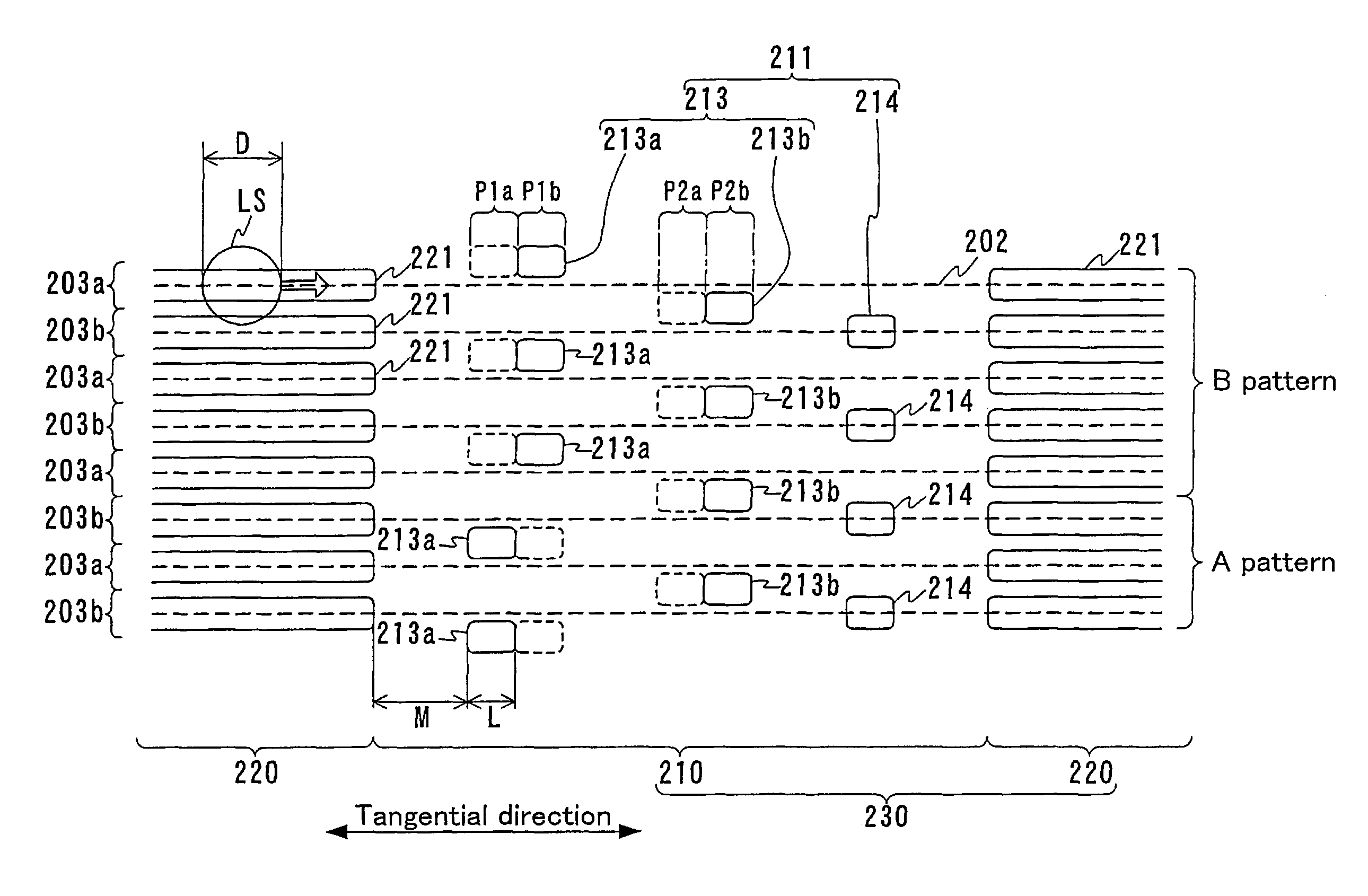Optical recording medium with prepit regions and recording/reproducing method thereof
a technology of optical recording medium and pre-recording region, which is applied in the direction of instrumentation, light beam reproducing, disposition/mounting of heads, etc., can solve the problems of reducing the residual error of tracking control, difficult to shorten the wavelength of reproduction light or increase the numerical aperture of an objective lens, and it is difficult to conduct laser annealing for a long time. , to achieve the effect of increasing the recording density
- Summary
- Abstract
- Description
- Claims
- Application Information
AI Technical Summary
Benefits of technology
Problems solved by technology
Method used
Image
Examples
embodiment 1
[0060]In Embodiment 1, a first information recording medium of the present invention will be described. The information recording medium of Embodiment 1 is irradiated with a laser beam condensed by an objective lens with a numerical aperture NA, whereby information is reproduced (or recorded). The information recording medium is provided with a disk-shaped substrate. On the surface of the substrate, a plurality of prepit regions and data regions are disposed alternately along spiral or concentric virtual track centers. The prepit region includes a pair of wobble pits for tracking servo. A length L (μm) of a wobble pit along the virtual track center and a spot diameter D (μm) of a laser beam along the virtual track center satisfy a relationship: 0.3≦(L / D)≦0.65. Particularly, it is preferable that L and D satisfy a relationship: 0.4≦(L / D)≦0.55. If the length of a wobble pit is within this range, even if the length of a wobble pit is varied, variations in an amplitude of a tracking con...
embodiment 2
[0069]In Embodiment 2, another information recording medium of the present invention will be described. The information recording medium of Embodiment 2 is irradiated with a laser beam condensed by an objective lens with a numerical aperture NA, whereby information is reproduced (or recorded). The information recording medium is provided with a disk-shaped substrate. On the surface of the substrate, a plurality of prepit regions and data regions are disposed alternately along spiral or concentric virtual track centers. The prepit region includes a pair of wobble pits for tracking servo. There are flat portions on the surface of the substrate before and after the wobble pits along the virtual track center. A length M (μm) of the flat portion along the virtual track center and a spot diameter D (μm) of a laser beam along the virtual track center satisfy a relationship: 0.65≦(M / D). When represented by using a wavelength λ (μm) of a laser beam to be radiated and a numerical aperture NA ...
embodiment 3
[0072]In Embodiment 3, a recording / reproducing method of the present invention will be described. According to a first recording / reproducing method of the present invention, the information recording medium of Embodiment 1 is irradiated with a laser beam condensed by an objective lens with a numerical aperture NA, whereby recording / reproducing is conducted. According to a second recording / reproducing method of the present invention, the information recording medium of Embodiment 2 is irradiated with a laser beam condensed by an objective lens with a numerical aperture NA, whereby recording / reproducing is conducted.
[0073]As a recording / reproducing apparatus used in the recording / reproducing method of the present invention, a general recording / reproducing apparatus can be used.
[0074]According to the first recording / reproducing method of the present invention, a length L (μm) of a wobble pit along a virtual track center, a wavelength λ (μm) of a laser beam, and a numerical aperture NA ...
PUM
| Property | Measurement | Unit |
|---|---|---|
| spot diameter | aaaaa | aaaaa |
| wavelength | aaaaa | aaaaa |
| diameter | aaaaa | aaaaa |
Abstract
Description
Claims
Application Information
 Login to View More
Login to View More - R&D
- Intellectual Property
- Life Sciences
- Materials
- Tech Scout
- Unparalleled Data Quality
- Higher Quality Content
- 60% Fewer Hallucinations
Browse by: Latest US Patents, China's latest patents, Technical Efficacy Thesaurus, Application Domain, Technology Topic, Popular Technical Reports.
© 2025 PatSnap. All rights reserved.Legal|Privacy policy|Modern Slavery Act Transparency Statement|Sitemap|About US| Contact US: help@patsnap.com



